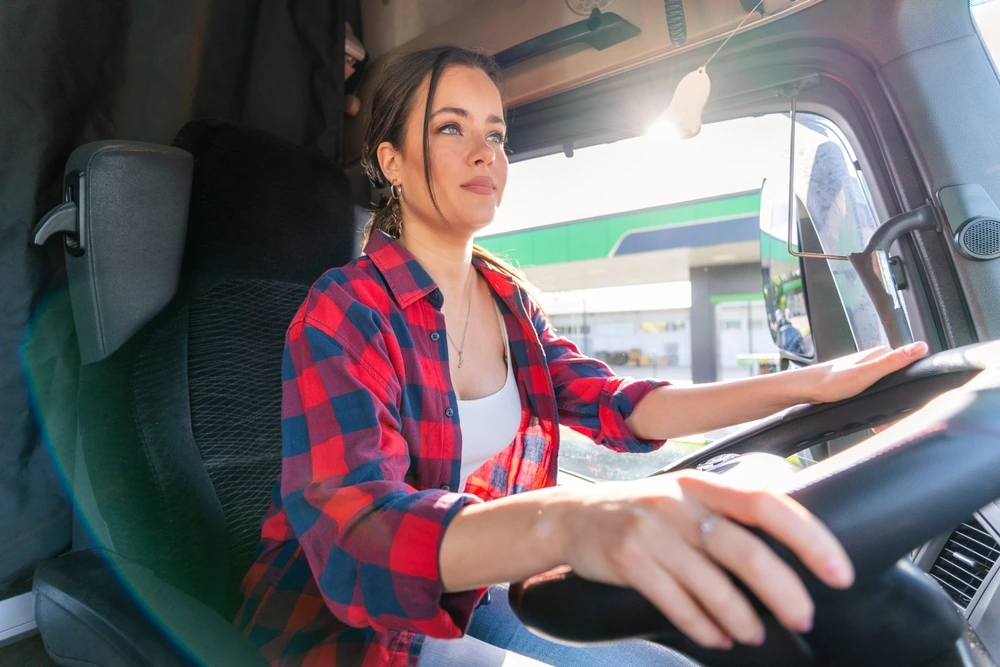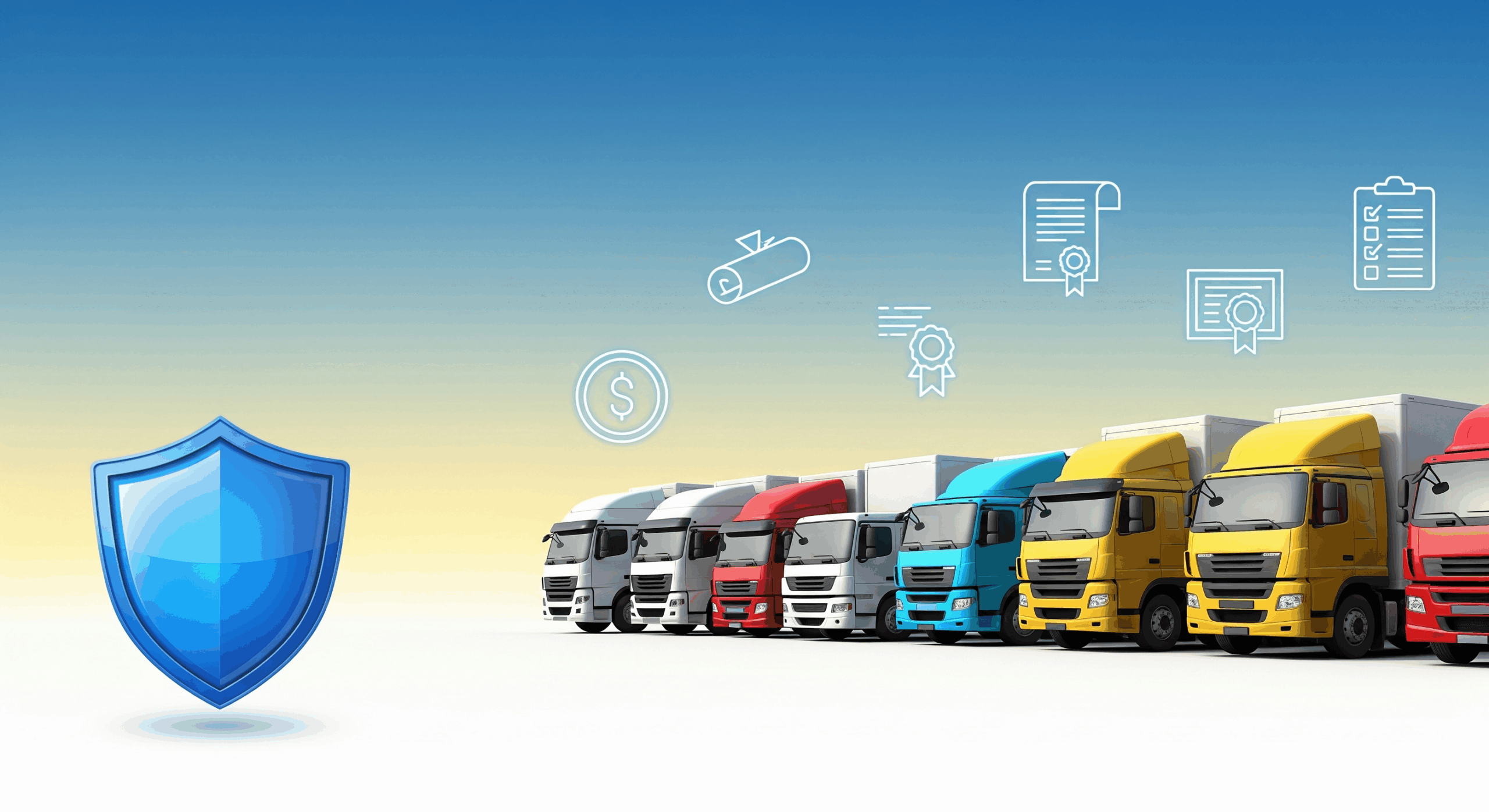The trucking industry has long been seen as a male-dominated field, with images of long-haul drivers often reflecting that tradition. However, over the past decade, a quiet yet powerful shift has been underway. More women than ever are stepping into roles across the trucking sector—not just behind the wheel, but also in operations, safety, logistics, and leadership.
Highlighting the growing role of women in trucking is more than a nod to diversity—it’s a recognition of the evolving face of the industry. As the demand for qualified drivers and skilled logistics professionals continues to rise, the inclusion of women is not only helping to fill gaps but also bringing fresh perspectives, improved safety records, and enhanced workplace culture.
By shedding light on their contributions, we help inspire future generations, break down outdated stereotypes, and encourage fleets and companies to create more inclusive and supportive environments. This shift isn’t just about equality—it’s about driving innovation, resilience, and long-term success in the trucking world.
This article explores how women in trucking are shaping the industry—transforming not only how freight is moved but also how the industry itself is viewed and valued.
The Evolution of Women in Trucking
For most of the 20th century, trucking was perceived as a “man’s job”—physically demanding, requiring long stretches away from home, and steeped in a culture that left little room for women. Female truck drivers were few and far between, often met with skepticism or even hostility when they entered the field. Those who did break in were pioneers, navigating not only highways but also a landscape of bias and limited opportunity.
However, the tides began to turn slowly as societal norms evolved and economic needs shifted. With the rise of equal employment opportunities and increasing awareness of gender equity, more women began to explore careers in trucking—especially as commercial driver’s license (CDL) programs became more accessible and the industry began opening its doors to a broader talent pool.
Today, while women still represent a minority in the trucking workforce—roughly 12-14% according to recent statistics—their presence is steadily growing. And in key areas such as safety, retention, and customer satisfaction, they are outperforming expectations and redefining what it means to be a professional truck driver.
Key Milestones in Female Participation in the Trucking Industry
- 1920s–1950s: A handful of women, like Lillie Elizabeth McGee Drennan—the first licensed female truck driver in Texas—challenge norms and become trailblazers for women behind the wheel.
- 1970s–1980s: As feminist movements gain momentum, women begin entering traditionally male-dominated trades in greater numbers, including trucking. CDL training becomes more accessible.
- 1990s: Large carriers and truck driver schools start actively recruiting women, driven by driver shortages and legal incentives to diversify.
- 2007: The Women In Trucking Association (WIT) is founded, bringing national attention to the role and potential of women in the industry.
- 2010s–Present: Technology, better truck designs, and improved workplace policies make the job more appealing and accessible to women. Female drivers earn recognition for safety records and industry contributions.
- 2020s: Women are not only drivers but also fleet owners, safety officers, logistics experts, and executives—taking the wheel in every aspect of the supply chain.
The Influence of Organizations Like Women In Trucking Association (WIT)
The Women In Trucking Association (WIT), founded by Ellen Voie in 2007, has played a transformative role in advancing the careers of women across the trucking industry. With a mission to encourage the employment of women in trucking, address obstacles, and celebrate successes, WIT has become a leading advocate for inclusivity and equality.
Key initiatives include:
- Annual WIT Index tracking female participation in various trucking roles.
- Top Companies for Women to Work For in Transportation list.
- Driver Ambassador Program, where women share experiences to inspire others.
- Mentorship and scholarship opportunities for women pursuing CDL training or professional advancement.
Thanks to WIT and similar advocacy groups, women in trucking are no longer outliers—they’re leaders, mentors, and essential contributors to the industry’s future.
The Impact Women Are Making
Women in trucking are not just filling seats behind the wheel—they are transforming the entire landscape of the industry. From the driver’s seat to the boardroom, their presence is improving operations, setting new standards, and inspiring a more inclusive future for transportation.
A. On the Road
Female drivers are making a powerful mark on the highways, earning praise for their professionalism, safety, and service excellence. Studies consistently show that women truck drivers are less likely to be involved in serious accidents, have fewer compliance issues, and often score higher on customer satisfaction metrics. Fleets are increasingly recognizing that hiring more women is not just good for diversity—it’s good for business.
Key Statistics & Stories:
- According to the American Transportation Research Institute (ATRI), women truck drivers have 50% fewer crashes on average than their male counterparts.
- Carriers with higher percentages of female drivers report improved driver retention rates, as women tend to stay with companies longer when given a supportive environment.
- Real story: A Midwest-based carrier recently highlighted a female driver who surpassed 1 million accident-free miles—a milestone only a small percentage of drivers ever reach. Her professionalism and attention to detail have made her a mentor to others entering the field.
These examples reflect a broader trend: women are not only capable but are often among the top performers on the road.
B. In Leadership and Logistics
Beyond driving, women are increasingly stepping into leadership roles in dispatch, fleet management, compliance, and safety departments. Their presence brings diverse thinking, collaborative leadership styles, and process improvements that benefit entire organizations.
Examples & Trends:
- Female operations managers and logistics coordinators are leading the charge in optimizing routes, improving driver support, and embracing new technologies.
- Women now hold executive roles at some of the nation’s leading carriers and supply chain companies.
- Female-owned trucking companies—such as Lady Logistics, R&R Trucking, and others—are proving that women can not only succeed in trucking but also build businesses that empower others.
These women are helping reshape company cultures and policies, making trucking a more inclusive and forward-thinking industry.
C. In Industry Advocacy
Women are also leading advocacy efforts to improve the working conditions, safety, and representation of all drivers. They are vocal in addressing issues such as:
- Rest area safety and access, especially for solo female drivers.
- Fair treatment in dispatch and pay practices.
- Sexual harassment prevention and reporting policies.
- The importance of gender-sensitive training and support networks.
Key Female Figures Making Waves:
- Ellen Voie, founder of the Women In Trucking Association, continues to be one of the most influential voices pushing for gender equity in the industry.
- Desiree Wood, founder of REAL Women in Trucking, champions driver rights and grassroots advocacy, giving a voice to underrepresented women behind the wheel.
- Lisa Gonnerman, VP of Safety & Security at Schneider, has implemented driver-first safety protocols that serve as models for the industry.
These women are not just reacting to challenges—they’re driving policy changes, influencing legislation, and fostering a culture where all drivers can thrive.
Women in trucking are no longer just participating—they are innovating, leading, and raising the bar for what the industry can achieve. Their impact is measurable, meaningful, and growing every year.
What’s Fueling the Shift?
The growing presence of women in trucking isn’t just a social evolution—it’s a direct response to industry dynamics, economic incentives, and targeted support programs. Several key factors are converging to create an environment where more women are not only entering the field but thriving within it.
1. Industry-Wide Driver Shortages Creating Opportunities
One of the most significant forces behind the shift is the nationwide driver shortage. According to the American Trucking Associations (ATA), the industry faces a shortfall of over 80,000 drivers, a number projected to grow if current trends continue. With freight demand at historic highs and supply chains stretched thin, carriers are being forced to expand their recruitment efforts beyond traditional demographics.
This need has prompted fleets to:
- Rethink recruiting strategies to actively include women.
- Promote trucking careers as viable for anyone with the right training and mindset.
- Highlight flexibility in routes, schedules, and equipment designed to suit a broader range of drivers.
As a result, women who may have previously overlooked trucking are now seeing it as an accessible and rewarding career path.
2. Rising Wages and Benefits Attracting a More Diverse Workforce
To attract and retain talent, many companies are offering competitive pay packages, sign-on bonuses, health benefits, and flexible scheduling—factors that appeal to a broader range of applicants, including women.
Additional benefits making trucking more appealing:
- Guaranteed home time and more regional route options.
- Paid maternity leave, which some progressive carriers have started implementing.
- Investment in safer, more ergonomic equipment that accommodates drivers of all sizes and physical strengths.
- Enhanced driver wellness programs, including mental health resources and fitness initiatives.
These incentives help eliminate traditional barriers to entry and show that trucking can be a sustainable and family-supportive career.
3. Supportive Programs, Mentorships, and Scholarships for Women
To further level the playing field, numerous organizations and companies have launched programs specifically designed to support women entering or advancing within the trucking industry.
Key examples include:
- Women In Trucking’s mentorship platform, which connects new drivers with experienced female mentors who offer guidance, support, and encouragement.
- Scholarships for CDL training funded by groups like WIT, Truckers Against Trafficking, and REAL Women in Trucking, helping to reduce the financial burden of certification.
- Corporate training programs that provide career advancement tracks for women into roles such as fleet management, safety coordination, and business ownership.
In addition, online communities and peer networks are helping women share knowledge, raise concerns, and build confidence in what was once a very isolated job. These supportive environments play a critical role in both recruitment and retention.
Together, these forces are driving a meaningful shift in the trucking industry—one that welcomes diversity, encourages innovation, and recognizes the immense value that women bring to the road and the broader transportation ecosystem.
How Fleets and Companies Can Support Women
As more women enter the trucking industry, it’s essential that fleets and logistics companies actively work to create supportive, inclusive environments where female drivers and professionals can thrive. This shift isn’t just about meeting diversity goals—it’s about cultivating a workforce that reflects the future of transportation. Below are key strategies that companies can implement to drive real change:
1. Creating Inclusive Recruiting Campaigns
Traditional recruiting materials often target men by default, both in language and visuals. To attract more women, companies must be intentional in how they market job opportunities and communicate company culture.
What this looks like in practice:
- Featuring women drivers and leaders in promotional videos, brochures, and social media campaigns.
- Using gender-neutral language in job descriptions and application materials.
- Hosting or participating in job fairs, webinars, and community events that focus on women in trades.
- Promoting company policies like flexible schedules, safety-first culture, and equal pay to appeal to diverse applicants.
An inclusive recruiting message shows women that they’re not just welcome—they’re wanted and valued.
2. Updating Facilities and Policies to Better Accommodate Women
Many of the physical and policy-related aspects of trucking have historically been designed with only men in mind. Updating these systems is a crucial step toward equity.
Facilities improvements may include:
- Ensuring restrooms, showers, and break areas at terminals and hubs are safe, clean, and gender-inclusive.
- Installing better lighting and security features at company parking lots and loading areas.
- Providing uniforms and PPE in a full range of sizes and styles suitable for women.
Policy enhancements could involve:
- Enforcing strict anti-harassment policies and clearly outlining reporting procedures.
- Offering paid family leave, including maternity leave.
- Creating zero-tolerance environments for discrimination or unsafe behavior on the road or in the workplace.
These updates show a commitment to not just welcoming women, but supporting their safety, comfort, and success long-term.
3. Highlighting Female Role Models in Company Marketing and HR
Representation matters. When women see others like them in leadership roles or as highly regarded professionals, it sends a clear message: you belong here.
Ways to highlight women internally and externally:
- Featuring female employees in driver of the month programs, success stories, or employee spotlights.
- Sharing video testimonials of women talking about their careers and experiences at the company.
- Creating internal recognition programs that celebrate the contributions of women across departments.
Companies can also partner with organizations like Women In Trucking to nominate employees for national recognition, such as the “Top Women to Watch in Transportation” or “Driver of the Year” awards.
4. Providing Mentorship and Leadership Development Programs
Retention is just as important as recruitment. Investing in the growth and development of women in trucking helps keep them engaged, motivated, and advancing.
Successful strategies include:
- Formal mentorship programs that pair new female drivers or employees with experienced women in the field.
- Creating leadership training pathways that prepare women for roles in safety, dispatch, HR, or fleet management.
- Encouraging participation in conferences, certification programs, and networking events, often with company sponsorship or reimbursement.
When women are given the tools and support to lead, they don’t just succeed—they lift others with them, helping build a more inclusive and high-performing organization.
By implementing these strategies, fleets and companies take an active role in shaping a more inclusive, resilient, and dynamic industry. Supporting women in trucking isn’t just good ethics—it’s smart business.



